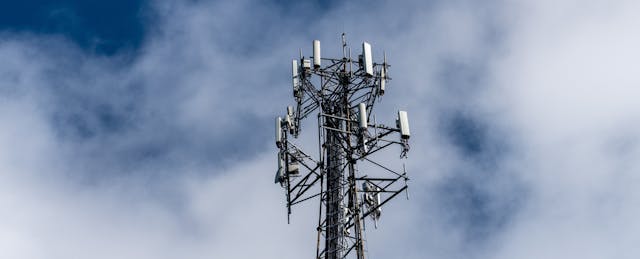While students around the country are back in school in person this year, the connection between education and high-speed internet hasn’t been severed.
Students still turn in assignments online and interact with class material through learning management systems, and they may even stream their lessons. The support services that are becoming critical for education—from health screenings to tutoring sessions—are also often delivered online.
And that means, more than ever, getting an education requires access to fast, reliable internet. But while the infrastructure to make sure that everyone can use the internet has improved in the last couple of years, the process isn’t complete.
If we want to keep the digital divide from growing, experts say, it’ll mean districts thinking about themselves as just one part of the larger community composed of families, nonprofits, businesses—all of them potential partners in expanding internet access for students.
A ‘Timely’ Challenge
In September, the U.S. Department of Education Office of Educational Technology published a report that laid out a broad framework for advancing “digital equity”—a term denoting the push to ensure that everyone can access enough technology for essential services and lifelong learning.
Achieving digital equity comes down, the report says, to “three A’s”—affordability, availability and adoption. The recommendations are timely and useful for framing issues of broadband access, experts who’ve looked over the report told EdSurge.
But while getting broadband to schools has been largely successful, getting it into homes has proven trickier.
Even when families have internet at home, it may not be fast enough to handle what a modern student needs. A CoSN report on student connectivity, published in July, found that, while internet speeds are improving for students, they still experience much slower internet speeds at home than in school.
And, for that matter, not everyone has access yet. Rural areas and poor areas of large urban districts, in particular, can suffer from a lack of internet or slow internet speeds, says John Parker, vice president of data science and strategy for the IT company Innive and lead author of the CoSN report. In those households—some of them in shared public housing—the internet can be slower because it’s often being used by more than one person. Potentially, that can cause a lot of frustration for students who may already be suffering from pandemic “learning loss” and other structural challenges.
A lot of the work ahead necessary for countering these issues, Parker and others say, may come to that third “A”: adoption.
Adoption Through Partnerships
Even if the infrastructure is slowly being laid down, it won’t mean much for learning if it isn’t being used.
There are benefit programs that subsidize broadband for low-income households, making a dent in affordability using federal infrastructure dollars. But, in the case of the Infrastructure Investment and Jobs Act, only a quarter of eligible households have actually signed up. In some cases, there may be reluctance to apply for the program due to lack of trust—among immigrant communities, for example—but the problem is also in making sure people are aware of the issue.
One of the lessons learned so far during the pandemic is that you can’t just buy a bunch of hotspots and expect the problem to be solved, says Angela Siefer, executive director at National Digital Inclusion Alliance, a nonprofit that’s trying to end the digital divide.
Instead, keeping the digital divide from widening may require some legwork.
Giving out grants and ensuring that communities have the infrastructure for high-speed internet doesn’t guarantee that the people who need it will know how to effectively navigate the system to get the access they need, says Nicol Howard, an associate professor in the school of education at the University of Redlands. “I think there's still some difficulties in understanding how to take advantage of discount rates for families,” Howard adds.
The priority should be less about schools looking inward, working to build up their own infrastructure. Instead, it’s about them partnering with communities to ensure families have broadband at home, Howard says. She suggests that means working with whatever community organizations may exist in districts, and also with businesses and nonprofits.
Including caregivers and the student’s family in the process is imperative, Siefer agrees.
Districts need to coordinate with the broader community to organize efforts to increase access to the internet, Siefer says. That will prevent the unnecessary duplication of services and could potentially open up existing resources to those who are already doing this work but might not be thinking about it as “digital equity,” she explains.
It’s also important that people are thinking about finding sustainable funding for these efforts since a lot of the federal funds aren’t permanent, she adds.
In the meantime, educators should be conscious of the varying levels of internet that students may have, Howard says. If a student doesn’t have great internet access at home, it may take them longer to complete assignments, and it may be more frustrating to do so. And that can impact their performance.
“I think awareness is key,” she says.


